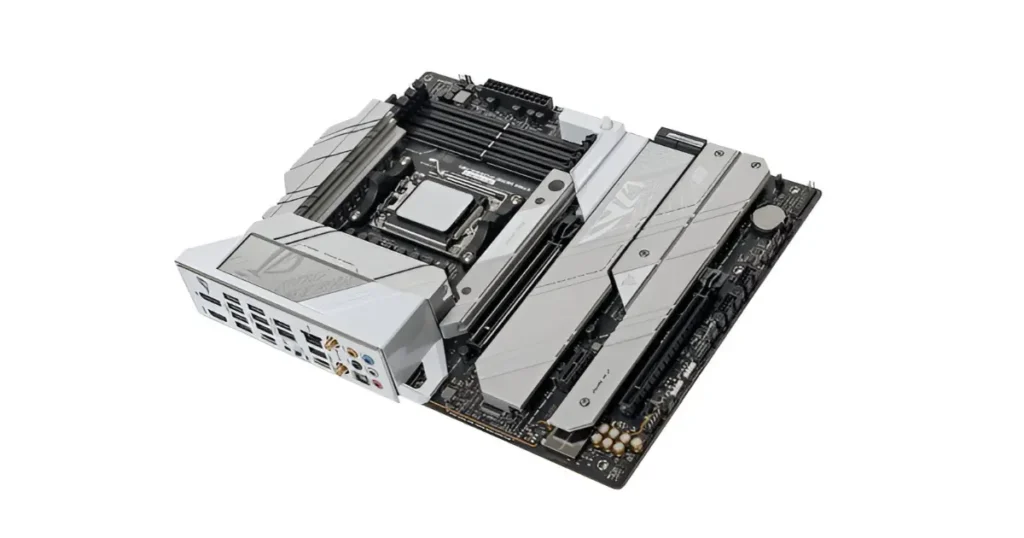When building a custom PC, every component matters – from the powerful CPU to the smallest screws. Among these components, the IO shield backplane might seem insignificant, but it serves critical functions for your system. The ASUS ROG Strix Z390-E Gaming motherboard comes with a specialized IO shield that deserves attention, especially for enthusiasts and gamers who demand the best from their builds.
Many builders overlook the importance of properly installing the IO shield, but this small metal plate protects your system while providing access to essential ports. In this comprehensive guide, we’ll explore everything you need to know about the ASUS ROG Strix Z390-E Gaming motherboard’s IO shield backplane, from its design features to installation tips and troubleshooting common issues.
What is an IO Shield Backplane?
Before diving into the specifics of the ASUS ROG Strix Z390-E Gaming motherboard’s IO shield, let’s understand what an IO shield backplane actually is. The IO (Input/Output) shield is a thin metal plate that fits into the back of your computer case, aligning with the motherboard’s rear ports. It serves several important functions:
- Protection against electromagnetic interference (EMI)
- Prevention of dust accumulation inside the case
- Proper airflow management
- Structural support for ports
- Aesthetic completion of your build
The ASUS ROG Strix Z390-E Gaming motherboard comes with a pre-attached IO shield, part of ASUS’s commitment to simplifying the building process while maintaining high-quality standards.
ASUS ROG Strix Z390-E Gaming IO Shield Design
Integrated Shield Technology
Unlike older motherboard models that came with separate IO shields you had to install manually, the ASUS ROG Strix Z390-E Gaming features an integrated IO shield. This pre-attached design eliminates the hassle of aligning and installing a separate shield, reducing the risk of improper installation or forgotten installation altogether – a common mistake among first-time builders.
Premium Materials
The IO shield on the Z390-E Gaming is constructed from high-quality materials designed to last the lifetime of your build. The shield features:
- Brushed aluminum finish matching the ROG aesthetic
- Precision-cut port openings for perfect alignment
- EMI-protective coating
- Thermal padding for improved cooling
- Subtle RGB lighting integration
Port Layout
The IO shield backplane for this motherboard accommodates an impressive array of connectivity options:
- 1x DisplayPort
- 1x HDMI port
- 2x USB 3.1 Gen 2 ports (1x Type-A and 1x Type-C)
- 4x USB 3.1 Gen 1 ports
- 2x USB 2.0 ports
- 1x Intel Gigabit Ethernet port
- 5x audio jacks
- 1x Optical S/PDIF out port
- Wi-Fi antenna connection points
This comprehensive selection ensures you have all the connectivity needed for a high-performance gaming or productivity setup.
The Importance of Proper IO Shield Installation
System Protection
Even though the Z390-E Gaming has an integrated IO shield, understanding its importance helps appreciate ASUS’s design choice. A properly installed IO shield creates a barrier between the inside of your case and the outside environment, protecting against:
- Dust infiltration that could cause overheating
- Accidental electrical shorts from foreign objects
- EMI that might disrupt signal integrity
- Small pets or curious fingers accessing sensitive components
Airflow Management
The IO shield helps direct airflow through your case in the intended path. Without a proper shield, air can escape through unintended openings, reducing cooling efficiency. The Z390-E Gaming’s integrated shield ensures optimal airflow patterns are maintained.
Aesthetic Value
For many PC enthusiasts, the build’s appearance matters almost as much as performance. The ROG Strix Z390-E Gaming’s IO shield features the distinctive Republic of Gamers branding and design language, adding to the premium aesthetic of your build when viewed from the rear.
Installation Process for the ROG Strix Z390-E Gaming Motherboard
Pre-Installation Checks
Before installing the motherboard with its integrated IO shield:
- Verify your case is compatible with ATX form factor motherboards
- Ensure the motherboard standoffs in your case are properly positioned
- Check that no metal tabs from the case’s IO cutout will interfere with the integrated shield
- Remove any placeholder IO shield that might have come with your case
Installation Steps
Since the ASUS ROG Strix Z390-E Gaming features an integrated IO shield, the installation process is simplified:
- Orient the motherboard correctly, aligning the rear IO ports with the case’s IO cutout
- Gently guide the integrated IO shield into the rectangular opening at the rear of your case
- Apply even pressure until the motherboard sits flush on the standoffs
- Secure the motherboard with screws, starting from the center and working outward
Common Installation Challenges
Despite the integrated design, some builders might encounter challenges:
- Tight fit with some case designs
- Slight misalignment requiring gentle adjustment
- Unexpected resistance during installation
Taking your time during this process is crucial to avoid damaging the motherboard or the integrated shield.
Maintaining Your IO Shield and Ports
Regular Cleaning
Even with the IO shield’s protection, dust can accumulate around your ports over time:
- Power down and unplug your system completely
- Use compressed air to blow away dust from port openings
- For stubborn dirt, use a soft brush or microfiber cloth
- Avoid liquid cleaners near electrical connections
Checking for Damage
Periodically inspect your IO shield for:
- Bent metal tabs
- Loose connections
- Corrosion around metal contacts
- Cracking in the plastic port housings
Early detection of these issues can prevent more serious problems down the line.
Troubleshooting IO Shield-Related Issues
Poor Connection to Peripherals
If you experience unstable connections to devices plugged into the rear IO:
- Check for dust or debris in the port
- Ensure the device cable is fully seated
- Verify the cable isn’t damaged
- Test the device in a different port
EMI Interference
If you notice signal degradation or interference:
- Ensure all shield grounding tabs are making proper contact
- Keep high-interference devices away from your PC
- Consider using shielded cables for sensitive connections
- Verify your case is properly grounded
Airflow and Temperature Concerns
If you notice higher-than-expected temperatures:
- Check that the IO shield isn’t blocking any case fans
- Ensure proper case airflow direction (typically front-to-back)
- Verify that all ports are unobstructed
- Consider additional cooling if necessary
Upgrading from Older ASUS Motherboards
If you’re upgrading from an older ASUS motherboard to the ROG Strix Z390-E Gaming, you’ll notice several improvements in the IO shield design:
Evolution of IO Shield Design
ASUS has continuously refined their IO shield design over generations:
- Early models: Separate stamped metal shields with sharp edges
- Mid-generation: Separate shields with improved materials and labeling
- Current generation: Integrated designs with premium finishes and enhanced protection
Integrated vs. Traditional IO Shields
The benefits of the integrated shield on the Z390-E Gaming include:
- Guaranteed perfect alignment with ports
- No risk of forgetting to install the shield
- Enhanced durability with no separate pieces
- Premium integrated design with superior aesthetics
- Better EMI protection through unified construction
Comparing the Z390-E Gaming IO Shield to Competitors
vs. Other ASUS Models
The Z390-E Gaming’s IO shield compares favorably even against other ASUS motherboards:
- More premium feel than TUF Gaming series
- Similar quality to Maximus series but with different port layout
- Better integration than budget Prime series boards
vs. Other Manufacturers
Compared to competitors in the same price range:
- More refined aesthetic than most MSI offerings
- Better material quality than average ASRock models
- Comparable to high-end Gigabyte Aorus designs
- Superior labeling and port identification
The Future of IO Shield Design
Industry Trends
The motherboard industry continues to evolve in IO shield design:
- Increasing adoption of integrated shields across price points
- Enhanced RGB integration into IO areas
- Improved materials for better EMI shielding
- More user-friendly port layouts and labeling
What’s Next for ASUS ROG
While the Z390-E Gaming represents excellent design, future ASUS ROG motherboards may feature:
- Fully customizable RGB lighting in the IO region
- Improved thermal management around USB controllers
- Enhanced port protection against static discharge
- More intuitive visual port identification systems
Conclusion
The ASUS ROG Strix Z390-E Gaming motherboard’s integrated IO shield backplane represents a thoughtful approach to system building. While easy to overlook, this component contributes significantly to your system’s protection, cooling efficiency, and overall aesthetic.
By understanding the importance and features of this seemingly minor component, you gain appreciation for the engineering that goes into creating a premium gaming motherboard. The integrated design saves time during installation while ensuring optimal alignment and protection for your system’s vital connections.
Whether you’re building your first gaming PC or upgrading an existing system, the attention to detail in components like the IO shield demonstrates why ASUS’s ROG Strix line continues to be a favorite among enthusiasts who demand both performance and quality.
FAQs About the ASUS ROG Strix Z390-E Gaming IO Shield
Can I replace the integrated IO shield if it gets damaged?
Unlike traditional separate IO shields, the integrated shield on the Z390-E Gaming isn’t designed to be replaced by end-users. If damaged, contact ASUS support for repair options.
Does the integrated IO shield affect cooling performance?
The integrated shield is designed to work with the motherboard’s overall thermal solution. It includes strategic openings for optimal airflow while maintaining protection.
Will the IO shield fit all PC cases?
The Z390-E Gaming uses the standard ATX form factor, so the IO shield should fit any case designed for ATX motherboards. However, some compact cases might have tighter tolerances requiring extra care during installation.
Can I use the motherboard without installing it in a case?
While technically possible for testing purposes, running without a case means losing the protection the IO shield is designed to provide. This isn’t recommended for long-term use.
Are there any special maintenance requirements for the IO shield?
Regular dusting with compressed air is sufficient. Avoid using liquid cleaners near the ports, and never attempt to bend or reshape the integrated shield.

